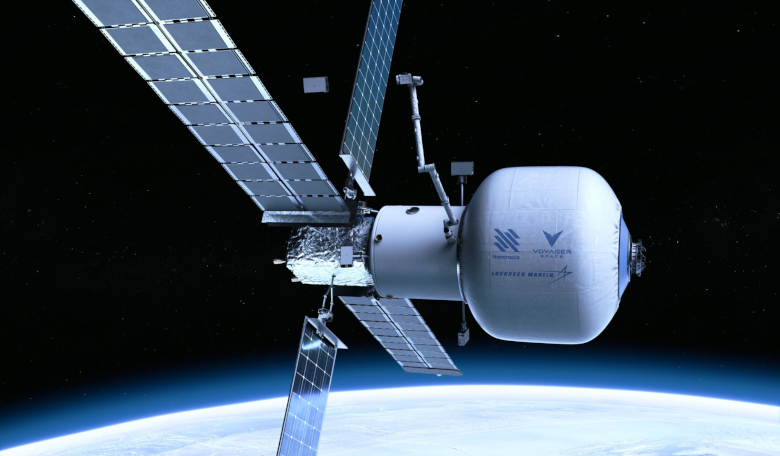Nanoracks, a private in-space services company based in the US, has announced it will develop the first-ever free flying commercial space station in collaboration with Voyager Space and Lockheed Martin.
Called Starlab, Nanoracks say the space station “will be a continuously crewed commercial platform, dedicated to conducting critical research, fostering industrial activity, and ensuring continued US presence and leadership in low-Earth orbit.”
The firm, who started off in business as a payload provider to the International Space Station (ISS), say Starlab will be able to host a continuous crew of up to four astronauts, who will live and work in a large inflatable habitat 340 cubic metres (m3) in volume. For comparison, the ISS has a habitable volume of 388 m3 not including visiting vehicles.
The station also features a 60kW power and propulsion element, a metallic docking node, a large robotic arm for servicing cargo and external payloads, and a state-of-the-art laboratory system to host advanced research, science, and commercial capability
Starlab will deploy from one single launch in 2027, allowing immediate use of the station, say Nanoracks, who are also planning to re-purpose in-space hardware (‘space junk’) and turn it into Outposts – agile autonomous space platforms ideal for technology development and test.
“Since the beginning, Nanoracks has sought to own and operate a private space station to fully unlock market demand,” says Jeffrey Manber, CEO and Co-Founder of Nanoracks. “Our team has spent the last decade learning the business of space stations, understanding customer needs, charting market growth, and self-investing in private hardware on the ISS like the Bishop Airlock. Nanoracks and our team are excited to work with NASA and our friends across the world as we move forward with Starlab.”
Starlab’s inflatable habitat module will be developed and built by Lockheed Martin who will also operate the system under Nanoracks’ leadership after launch. Voyager Space, the majority stakeholder in Nanoracks, will oversee financing and capital investment.
“We have invested significantly in habitat technology which enables us to propose a cost-effective, mission-driven spacecraft design for Starlab,” said Lisa Callahan, vice president and general manager, Commercial Civil Space at Lockheed Martin. “We’re excited to be part of such an innovative and capable team.”
The core of Starlab is named the GWC Science Park, after American scientist George Washington Carver. It will consist of four main operational departments: a biology lab, plant habitation lab, physical science and materials research lab, and an open workbench area.
The science park will also form a node as part of the International Association of Science Parks (IASP); a worldwide network of hubs designed to inspire innovation in science and technology.
Once deployed, Starlab will be jostling for space in orbit alongside many up and coming private and government planned stations.
Sierra Space are aiming to wow NASA with its inflatable habitat – the Large Integrated Flexible Environment (LIFE), while Axiom Space Inc says their own orbiting outpost will nearly double the useable volume of the International Space Station.
Although the ISS has been a beacon of international cooperation between space agencies since it became operational in 2009, reports suggest the station is reaching a point beyond repair and will be decommissioned sometime between 2028 and 2030, or earlier, as government funding starts to cease.
Filling the government void are China and Russia who are also in the process of constructing their own space stations with designs that mirror the ISS, only smaller. While Russia has not ruled out an involvement with other countries, Roscosmos says it is ready to finance the project themselves, like China.











